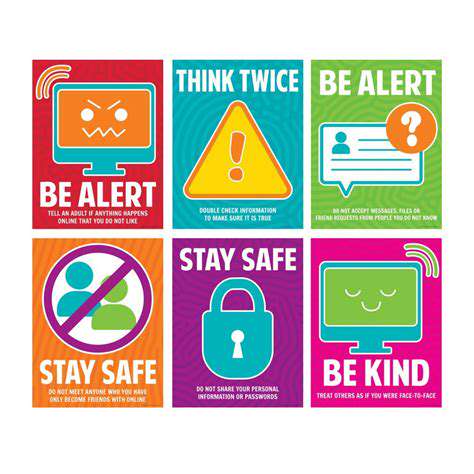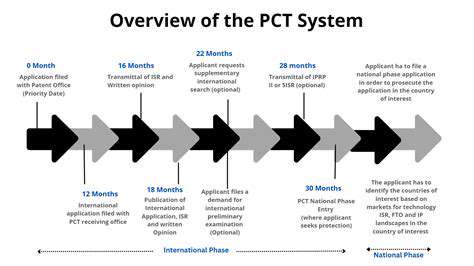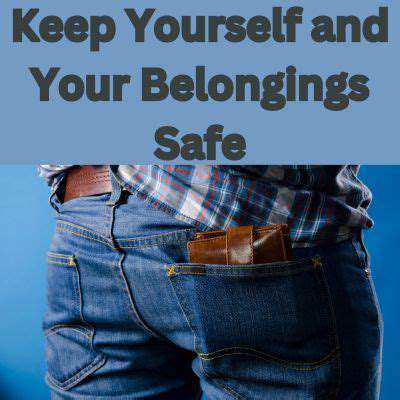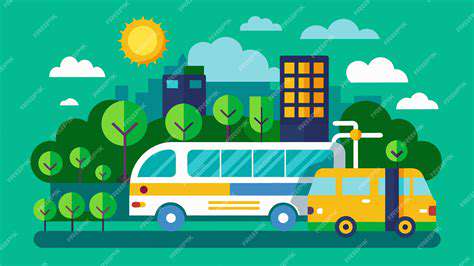Travel Safety Tips for Avoiding Pickpockets
Understanding Your Environment
Being aware of your surroundings is a crucial first step in travel safety. This involves more than just looking around; it's about actively observing the people and situations around you. Notice the local customs and behaviors, pay attention to any unusual activity, and assess potential risks in your immediate environment. A heightened sense of awareness can help you anticipate potential dangers and react appropriately, whether it's avoiding suspicious individuals or recognizing potentially unsafe situations.
Take note of local laws and regulations, as well. Knowing what's considered acceptable behavior in a specific area can help you avoid unwanted attention or legal trouble. Researching common scams or petty crimes prevalent in your destination will also help you proactively avoid them.
Planning Your Itinerary and Accommodation
A well-planned itinerary and safe accommodation choices are fundamental to travel safety. Thoroughly research your destination before you go, learning about potential risks and safety precautions. This includes identifying safe neighborhoods, researching local transportation options, and determining appropriate walking routes. Booking accommodations in reputable establishments and confirming their safety features in advance is also important.
Consider your travel companions and their safety awareness levels. Agree upon communication strategies and establish a meeting point in case you get separated. Communicating your itinerary and expected return time to someone you trust back home, and keeping them updated, is an added layer of security.
Protecting Your Belongings
Protecting your belongings is a key aspect of travel safety. Don't flaunt expensive jewelry or electronics. Keep your valuables close and out of sight when possible. Utilize hotel safes for important documents and items when available. Using secure, well-lit public transportation, if applicable, can minimize the risk of theft.
Staying Alert and Avoiding Risks
Maintaining a heightened state of alertness is crucial for travel safety. Avoid walking alone at night in unfamiliar areas. Be wary of strangers offering help or directions, especially in crowded places. Trust your instincts; if a situation feels unsafe, remove yourself from it immediately. These simple precautions can significantly reduce your risk of encountering dangerous or uncomfortable situations.
Be mindful of your drink and food choices, especially in areas with unknown food safety standards. Avoid consuming anything from street vendors or unverified sources if possible.
Communicating and Seeking Help
Establishing clear communication channels is essential in any travel situation. Carry important contact information, including emergency numbers, and ensure your phone is charged and accessible. Learn a few basic phrases in the local language; this can be helpful in navigating unfamiliar situations. Knowing how to access local emergency services, such as contacting the police or ambulance, is also crucial.
Don't hesitate to seek help if you need it. If you feel threatened or in danger, immediately contact the authorities or a trusted person for assistance. Knowing how to report crimes and how to access appropriate help is an important aspect of travel safety.
Secure Your Belongings: Protecting Your Valuables

Protecting Your Valuables
Protecting your valuables is crucial for maintaining peace of mind and ensuring that your hard-earned possessions remain safe. Whether it's jewelry, electronics, or sentimental items, taking proactive steps to safeguard them from theft or damage is essential. Understanding the various security measures available and implementing them effectively can significantly reduce the risk of loss or harm.
Consider the environment where your valuables are stored. Are they easily accessible to potential thieves? Implementing strategies to limit visibility and restrict access can be a game-changer. This includes using strong locks, secure storage containers, and even hidden compartments.
Insurance and Documentation
A vital aspect of protecting your belongings is comprehensive insurance coverage. Having adequate insurance policies can significantly mitigate financial losses in case of theft, damage, or unforeseen circumstances. Ensure that your policies are up-to-date and cover the full value of your most prized possessions. Thorough documentation is equally important. Keep detailed records of your valuables, including purchase dates, descriptions, and serial numbers.
Backing up these records digitally is also a smart move. This way, you have a readily accessible copy of your documentation in case of loss or damage to your physical records. Consider storing digital copies in a secure online vault or on an external hard drive. This approach provides a secondary layer of protection.
Security Systems and Practices
Implementing robust security systems can greatly enhance the safety of your belongings. Modern security systems offer advanced features like motion detection, alarm systems, and video surveillance. Integrating these systems into your home or business environment can deter potential intruders and provide peace of mind.
Beyond security systems, practicing good habits can also play a significant role in protecting your valuables. This includes keeping doors and windows locked securely at all times, even when you're temporarily away from your property. Be cautious about leaving valuable items in plain sight, and avoid displaying expensive possessions in public areas.
Furthermore, educating yourself about common scams and theft methods can help you avoid becoming a victim. Staying informed about the latest security threats and adopting appropriate precautions can significantly reduce the risk of loss.
Preventive Measures and Awareness
Proactive measures are key to protecting your belongings from theft or damage. Installing high-quality locks, using strong passwords, and being aware of your surroundings are all important steps. Regularly reviewing your valuables and insurance coverage can help you stay on top of things and ensure your belongings are adequately protected.
Educating yourself about common theft tactics and security risks can also empower you to take preventative steps. By understanding the methods used by thieves, you can implement strategies to prevent them from targeting your possessions. Staying vigilant and informed is crucial in today's environment.
Waiver of premium riders are crucial additions to life insurance policies, especially for individuals facing potential health challenges. These riders provide a safety net, ensuring continued coverage even if the policyholder becomes unable to pay premiums due to a covered illness or disability. This protection can be especially important for maintaining financial security for dependents in the event of a critical health event.
Travel with a Plan: Preparing for the Unexpected
Understanding Potential Risks
Traveling, while exciting, involves inherent risks. Knowing what those risks might be, whether it's petty theft in a crowded market or a sudden illness far from home, empowers you to proactively mitigate them. This includes researching the local laws and customs of your destination, understanding potential safety concerns specific to the area, and being aware of common scams or pitfalls tourists often encounter. This proactive approach will significantly reduce the chances of unpleasant surprises.
Every destination has a unique set of potential hazards. Thorough research is key to anticipating potential issues and taking precautions. This involves looking into local crime statistics, health risks (like waterborne illnesses), and natural disaster probabilities. A well-informed traveler is a safer traveler.
Packing Smart: Essentials for Safety
Packing light is often encouraged, but packing smart for safety is crucial. Include essential medications, copies of important documents (passport, visa, insurance details), and contact information for emergency services and your embassy. A first-aid kit with common medications and bandages is indispensable, particularly for unexpected injuries or illnesses.
Consider packing a small, portable charger, and a local SIM card (if available). This way, you'll always have access to communication, even in unexpected situations. Having backups for your important documents, like scanning copies, is also a great idea.
Emergency Preparedness: Knowing Your Resources
Before you leave, familiarize yourself with emergency numbers and procedures. Learn how to contact your embassy or consulate in case of issues. Write down or save these numbers in your phone or a physical notebook. Having a plan for contacting emergency services in case of an accident or illness is paramount to ensuring your safety.
Staying Aware: Maintaining Situational Awareness
Be mindful of your surroundings, especially in crowded areas. Don't flaunt expensive jewelry or electronics. Keep your valuables close and avoid walking alone at night in unfamiliar areas. Being aware of your surroundings is a fundamental aspect of personal safety, especially when traveling abroad.
Communicating Effectively: Staying Connected
Inform someone at home of your itinerary and expected return date. This is a fundamental step in ensuring someone knows your whereabouts and can alert authorities if necessary. Share your location with trusted contacts using GPS-enabled devices or apps. Effective communication is crucial for staying safe and connected during your travels.
Respecting Local Customs: Navigating Cultural Differences
Cultural sensitivity is critical for a safe and enjoyable trip. Research local customs, dress codes, and etiquette to avoid unintentional offense. Understanding and respecting local traditions helps you integrate seamlessly into the community and minimizes potential misunderstandings or conflicts that could compromise your safety. Avoid actions that could be considered disrespectful to local customs.
Practice Vigilance: Staying Alert and Aware
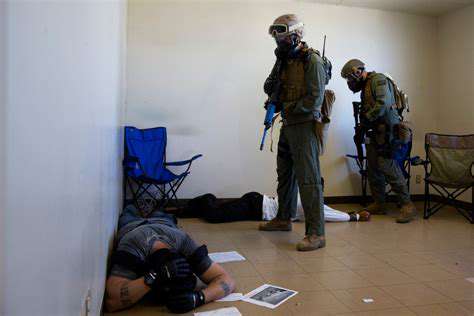
Staying Alert in a Threat-Filled World
In today's complex and interconnected world, vigilance is more crucial than ever. Staying alert involves more than just being aware of your surroundings; it encompasses a proactive approach to identifying potential dangers and threats. This vigilance extends to various aspects of our lives, from personal safety to maintaining a healthy work environment. Developing this crucial skill requires constant vigilance and a willingness to adapt to changing circumstances.
Maintaining alertness involves actively observing the environment around you and being mindful of potential risks. This includes paying attention to unusual activities, suspicious individuals, or any signs of trouble. By being vigilant, you can often recognize and avoid potentially dangerous situations before they escalate. It's not about paranoia, but rather a calculated and responsible response to the realities of the world we live in.
Recognizing and Responding to Potential Threats
A key component of vigilance is the ability to recognize potential threats. This involves developing an awareness of the subtle cues and indicators that might signal a dangerous situation. Recognizing these signs requires practice, experience, and an understanding of the context surrounding the environment.
Once a potential threat is identified, a swift and appropriate response is crucial. This response should be tailored to the specific situation, taking into account the safety and well-being of yourself and others. Developing a plan for responding to potential threats, and practicing those responses, will allow for a more effective and controlled response should a situation arise.
Learning to recognize and respond to potential threats isn't just about physical safety; it also includes recognizing signs of emotional or psychological distress. Being attentive to these signs can help prevent potential harm or escalate the situation.
Cultivating a Culture of Vigilance
Creating a culture of vigilance extends beyond individual responsibility and encompasses a collective effort to promote safety and well-being. This can be achieved through proactive measures such as security training, safety protocols, and a shared understanding of potential risks.
Encouraging open communication and fostering a supportive environment where individuals feel comfortable reporting suspicious activities is critical. This creates a network of vigilance where everyone plays a part in maintaining safety and preventing potential harm. Creating a culture of vigilance empowers individuals to recognize and respond to threats effectively.
Promoting a culture of vigilance can also extend to public awareness campaigns. Educating the public about potential threats and how to stay safe can significantly reduce risks and promote a safer community for everyone. This includes promoting awareness of online safety and security measures.
Regular drills and simulations can significantly improve response times and effectiveness in a crisis situation. It also helps familiarize participants with procedures, which can be invaluable in a real-world scenario. Understanding different types of threats and potential vulnerabilities is also an essential part of this process.
Strong leadership is essential in fostering a culture of vigilance. Leaders should set the example by prioritizing safety and security, and by actively supporting and promoting proactive measures. This includes creating a safe environment in which people feel comfortable speaking up and sharing their concerns.
